Leningrad plastic house
Categories: Design and Architecture
By Pictolic https://pictolic.com/article/leningrad-plastic-house1.htmlIn 1961, a unique construction experiment was carried out in Leningrad: a small mansion was built on Torzhkovskaya Street in the depths of the block between house 24, building 1 and 24, building 2. Its uniqueness was not in its bright architectural appearance, not in the fact that a single-apartment mansion suddenly appeared among the typical Khrushchev five-story buildings, but in the fact that it was made of ... plastic.
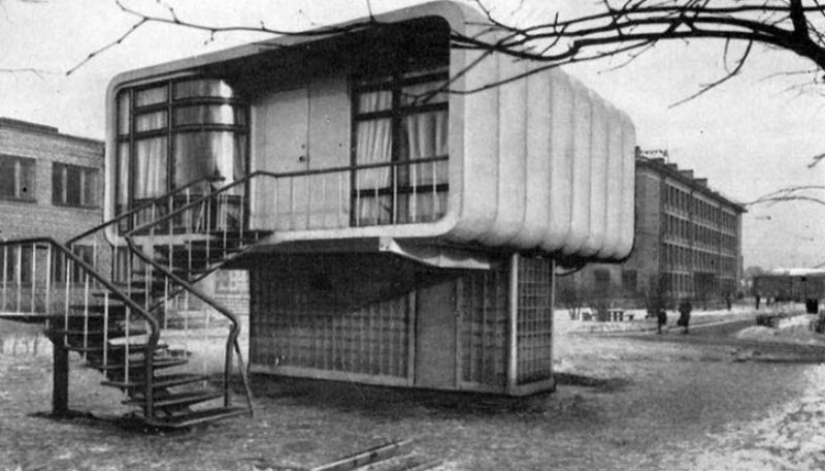
In fact, the house was two-story. The lower floor was technical, where there were various communications and the installation of air heating and ventilation. The walls of the technical floor were made in the form of a reinforced concrete frame filled with glass blocks. The upper (residential)one was made of plastic the floor is raised 2 meters 20 centimeters above ground level.
Unfortunately, the plastic house has not survived to this day. This is what the place where it once stood looks like now.
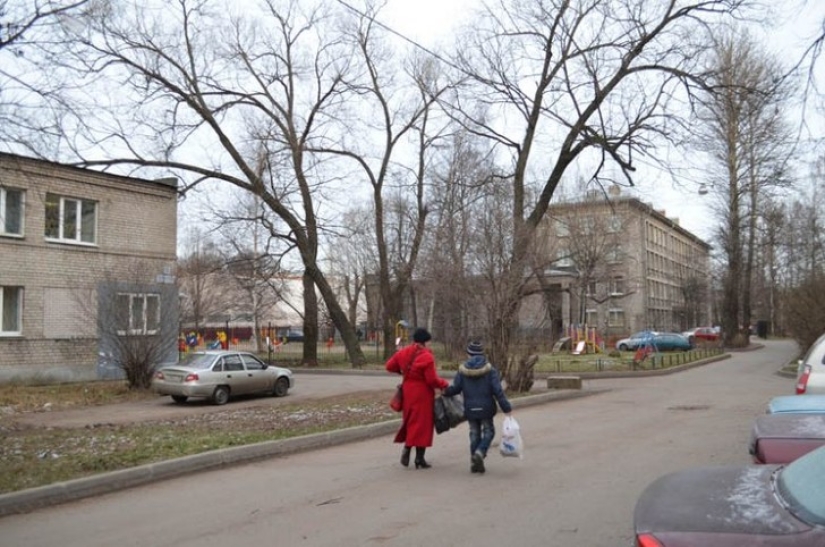
The building in the photo on the left has the address: Torzhkovskaya str., 24, building 2 - now there is a youth club "Yunost"working in it. In the distance, you can see a typical four-story building, which now houses the Palace of Creativity of Children and Youth.
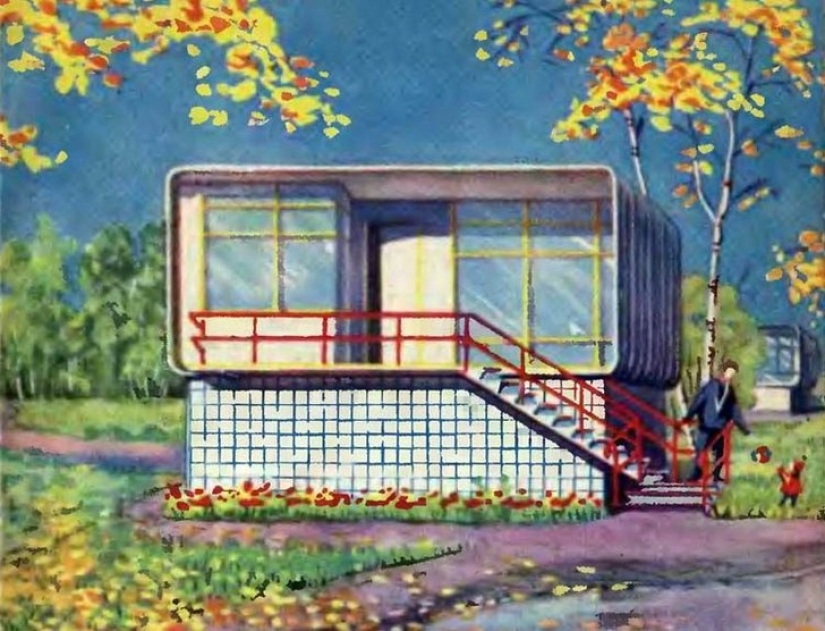
The authors of the experimental plastic house were architect A. P. Shcherbenok and engineer L. G. Levinsky.
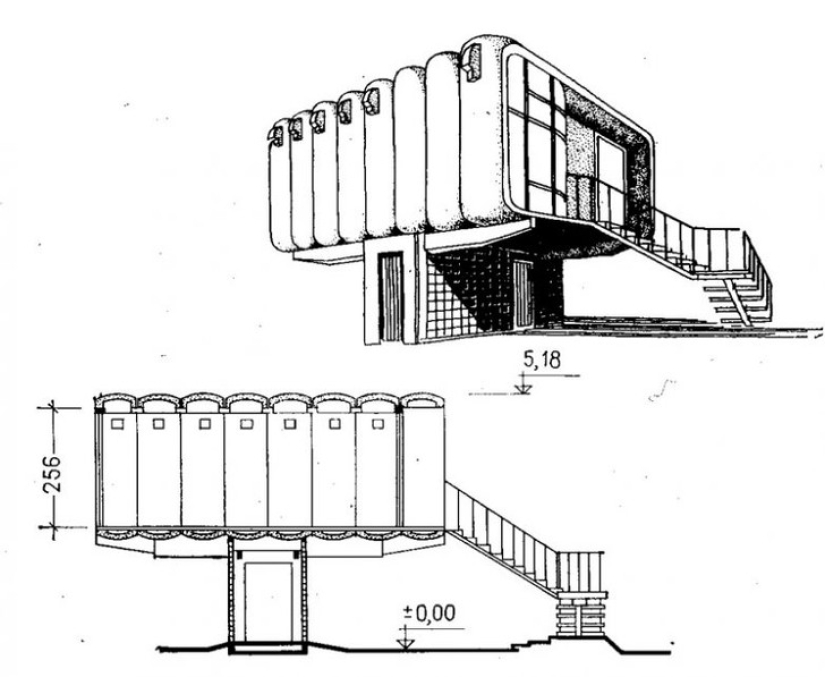
The walls of the house were mounted from panels that were made of two layers of durable fiberglass with a layer of expanded polystyrene enclosed between them (which played the role of insulation). The maximum thickness of the walls reached 14 centimeters, the rigidity was given to them by a kind of shell structures. Experimental engineers then calculated that the heat-protective properties of such plastic "sandwiches" would be equal to a two-meter brick wall.
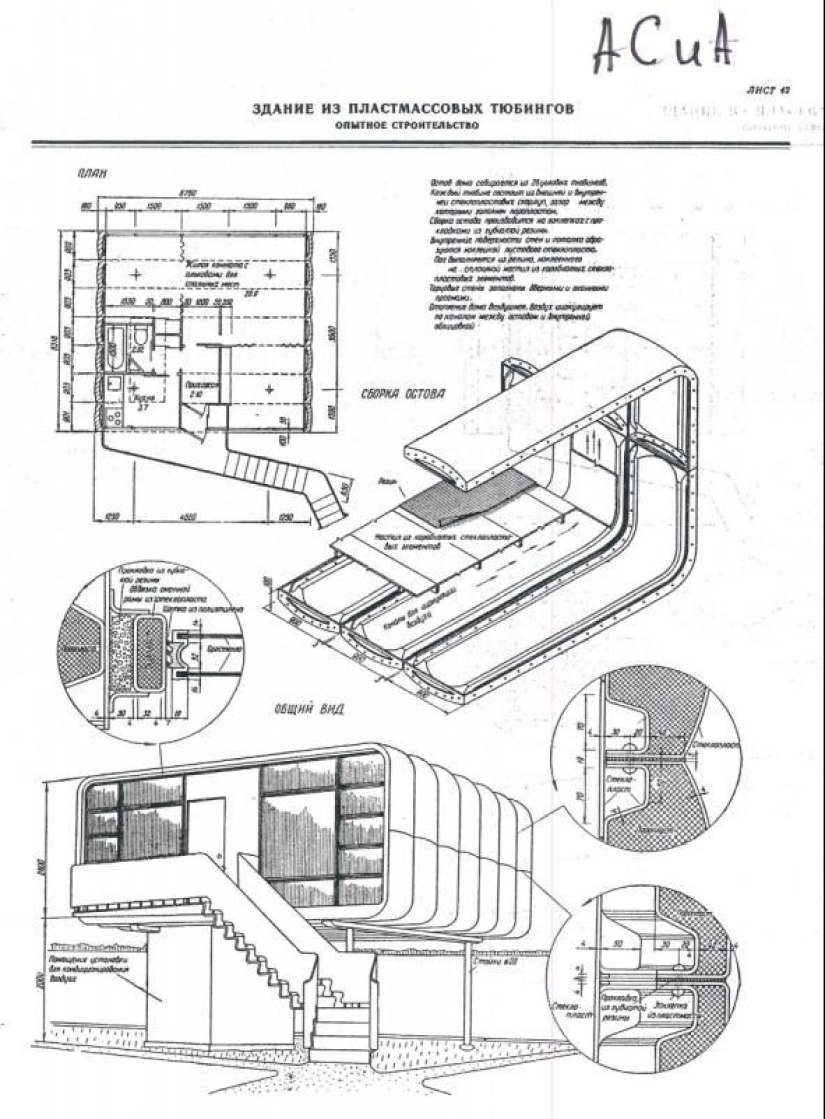
A one-room apartment with a kitchen, a combined bathroom, a storage room and a small terrace was designed in a plastic house. The authors of the experiment came up with the maximum number of elements made of plastics: huge windows were made of plexiglass, pipes made of vinyl plastic, wallpaper made of PVC film on a paper basis.

No one lived in this small house. The main purpose of the experiment was to test the possibilities of manufacturing various construction products from plastics, as well as to study the performance indicators of plastic buildings.
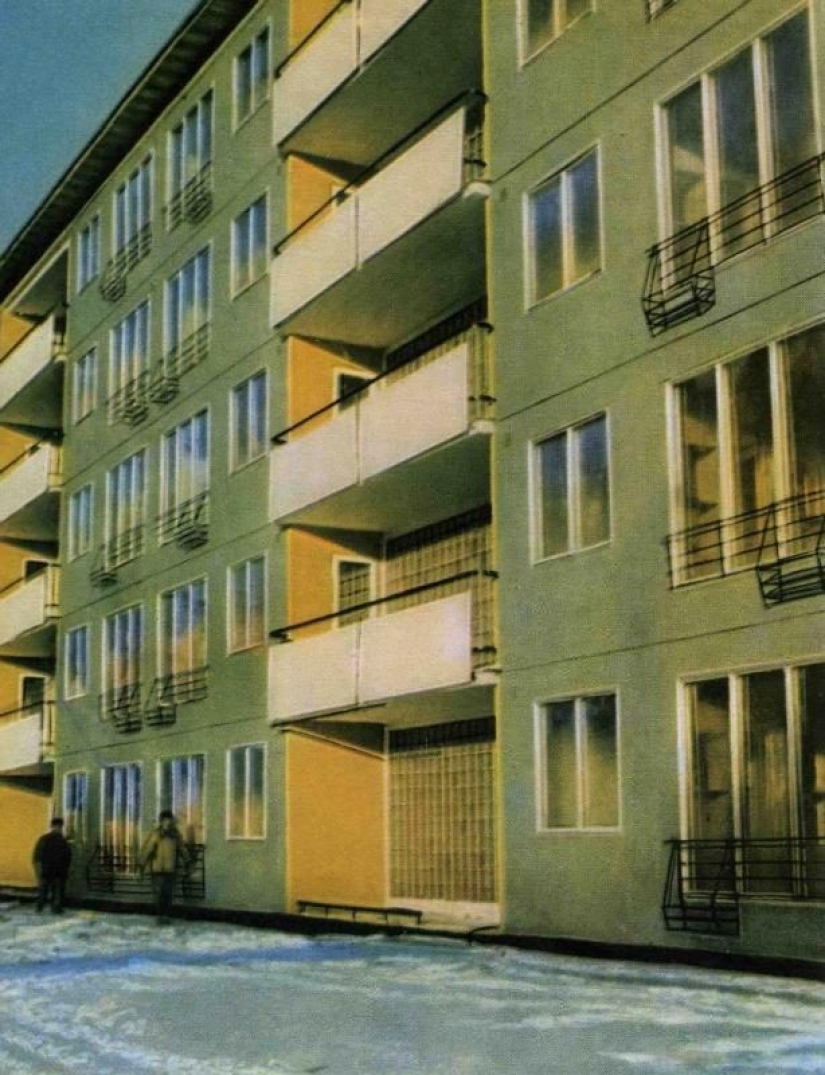
Based on the results of the analysis and generalization of three‑year observations on the first domestic fully plastic house, since the mid-60s, we have moved to the practical introduction of plastics in construction. In Moscow, a plastic five‑story building was built in the 4th Vyatsky Lane.

The experiment was widely covered in the press. In addition to domestic publications, from narrowly specialized to popular science, photos of the Leningrad plastic house appeared in foreign magazines.

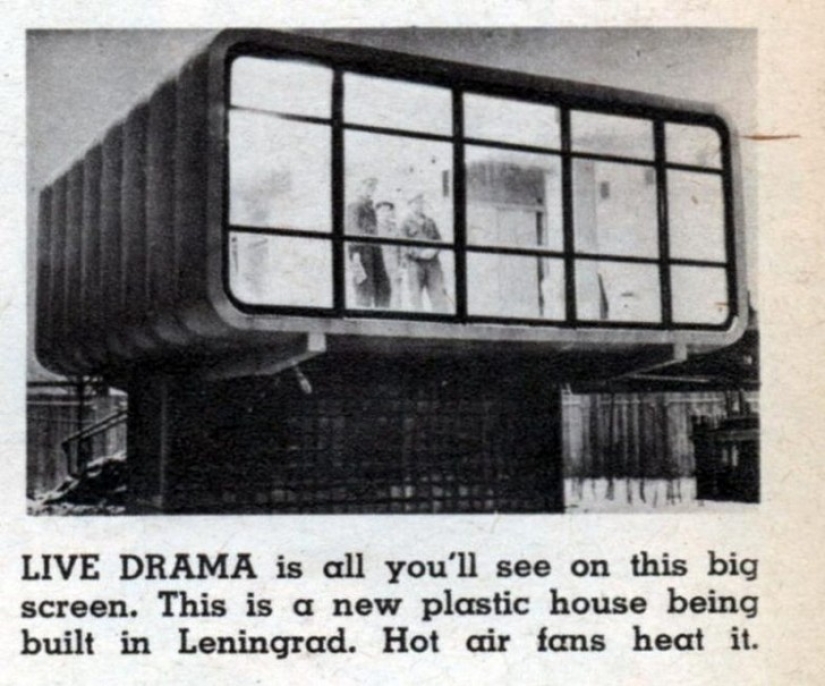
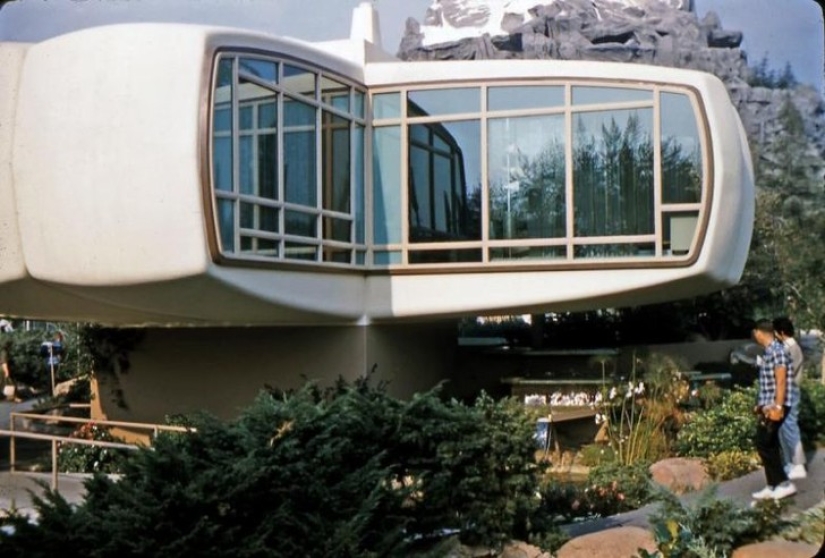
It should be noted that the Soviet plastic house was not the only one in the world. In 1957, a plastic "House of the Future" was built in Disneyland.
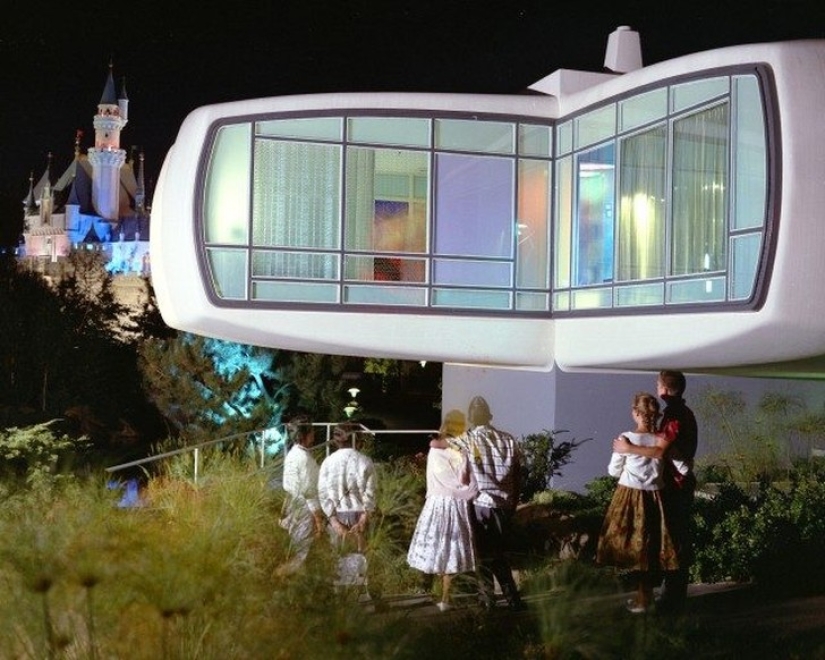
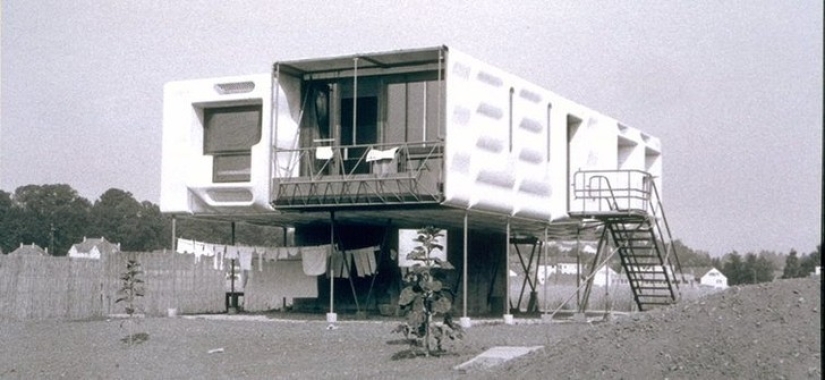
In 1963, Dieter Schmidt built his plastic house, structurally similar to his Leningrad counterpart.
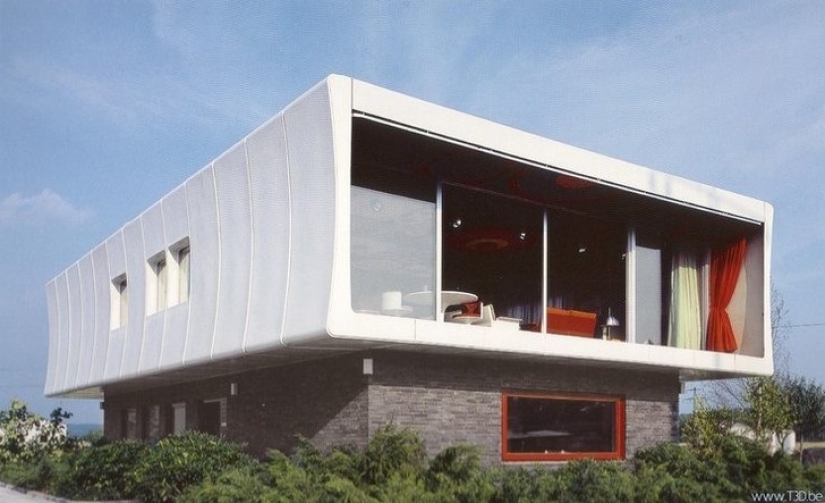
In 1969, another plastic mansion was built in Germany, surpassing the size of its predecessors.
The first domestic plastic house was a laboratory for three years. And then they just forgot about it. The house was slowly decaying, destroyed by time and the hands of vandals. In the end, the remains of it were demolished.
Keywords: Russian Federation | Construction | House | Design and architecture | Plastic | USSR | Experiment | Leningrad
Post News ArticleRecent articles

The next time you're at a dinner party and someone lays out different nuts, take a moment and let everyone know that many of the ...

Discussions have been going on about the origin of the Americans' nickname "Yankee" for a very long time. There are many versions, ...
Related articles

Beloved by many, actor Mikhail Boyarsky has always been distinguished not only by his cheerful disposition and desperate, sometimes ...

Now we can keep our savings in a bank or, if we don't trust financial institutions, put them in a safe and keep them at home. And ...

Since 1970‑ies in the neighboring cities of Rostov-on-don, Shakhty and Taganrog was sent to jail 37 serial killers, who killed ...

A nudist cruise isn't just a clothing-optional sea voyage; it's an entire subculture with its own rules, traditions, and ...